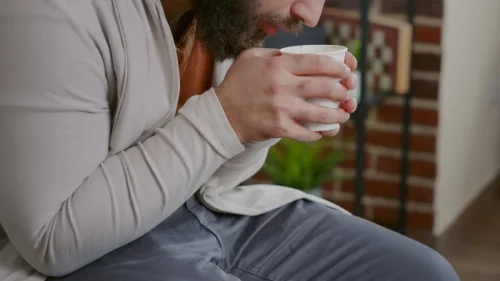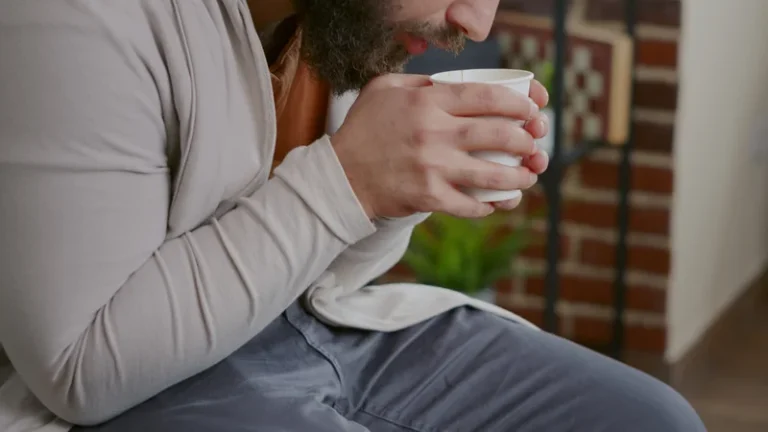
The peak of withdrawal symptoms may occur within 48–72 hours, and symptoms may clear within 7–10 days. Withdrawal can also happen to people who take long-term opioids for pain as their doctor prescribes, but there are differences between the two. This article focuses on opioid withdrawal in people with opioid use disorder. Instead, healthcare providers diagnose it if you have three or more withdrawal symptoms within one week of decreased marijuana use. When you regularly use marijuana (THC), your body may build tolerance and dependence.
Health Conditions

For example, benzodiazepines might be effective for helping people with alcohol withdrawal syndrome, but they won’t be appropriate for someone who has misused benzodiazepines in the past. These symptoms are common across substances — in other words, no matter which substance you used, you might experience one or more of the above. According to the research, these symptoms can endure weeks or even months after discontinuing use.

What questions should I ask my healthcare provider?
Newer agents likewise exploit these pharmacological mechanisms, including tramadol (μ-opioid receptor agonism) and tizanidine (α2 agonism). Tramadol could also be a viable option (along with buprenorphine) in the treatment of withdrawal for patients with opioid use disorder who refuse MOUD or for whom these medications are unavailable. For signs of opioid addiction patients with opioid use disorder for whom MOUD stabilisation is the primary goal, the agents selected for medically supervised withdrawal depend on the MOUD chosen.
Psychological Symptoms
PAWS can make day-to-day tasks uncomfortable and, if a person is dealing with addiction, lead to relapses during recovery. If you or a loved one are experiencing PAWS, there are treatments to help you manage these symptoms. After the acute phase of withdrawal, a person may still need professional medical care, as PAWS symptoms can be severe and affect the quality of life. PAWS symptoms can be uncomfortable and distressing, and they can be risk factors for relapse. Having a strong self-care routine, working with medical professionals, and having support from people who understand can help.

A person using 50 milligrams or less of oxycodone per day, for instance, would likely experience milder withdrawal symptoms than a person using 50 to 100 milligrams of the drug each day. An individual using more than 100 milligrams of oxycodone daily would likely have a severe withdrawal reaction. But being dope sick, as it’s sometimes called, doesn’t have to stand in the way of recovery. Detox facilities can help you overcome withdrawal safely and effectively, and opioid treatment and rehab can minimize the risk of relapse. Prescription opioids can be helpful medications for people with chronic pain but only when used as prescribed by a doctor.
How Does Methadone Work?
- “Opioid overdoses can be lethal if you don’t provide quick medical treatment,” Lejeune said.
- Whether they determine you have OUD or not, your doctor can help you create a treatment program just for you.
- Whether you’ve experienced addiction or are withdrawing after using prescription medication, it can be helpful to find a support group.
The treatment may continue for an extended period of time if symptoms continue. In addition to medical treatment resources, be sure to seek out relationships with people who support your recovery – like support groups and recovery coaches. If a person with substance misuse disorder abruptly stops using the substance, they may experience withdrawal symptoms.

The table summarises the advantages and disadvantages of different pharmacological agents, and the appropriate situations in which to use them. However, randomised controlled trials are needed to definitively establish which medications might be best suited for managing withdrawal symptoms during either opioid dose reduction or discontinuation in patients with CNCP. Improving induction success rates, particularly in relation to the management of withdrawal before extended-release naltrexone administration, remains an active area of investigation. If your PAWS symptoms seem overwhelming or dangerous, you should seek medical treatment. If you also have other mental health conditions, a doctor may be able to help you better manage all your symptoms. In some cases, medications can help normalize brain chemistry and prevent PAWS symptoms, which can help you with recovery.
Post-acute withdrawal syndrome (PAWS) involves symptoms that last or develop after the initial withdrawal from a substance. For instance, babies born to mothers who have OUD may have opioid dependence and can experience withdrawal symptoms. This condition is called neonatal opioid withdrawal syndrome (NOWS). NOWS can cause early labor, fetal growth restriction, placental abruption, and fetal death among other problems.
- If an opioid is prescribed, let your healthcare team know if you had any trouble tapering off opioids in the past.
- Continued use of the drugs causes changes in the brain that lead to tolerance.
- A test called the Clinical Opioid Withdrawal Scale (COWS) can give your doctor an idea of how serious your case is.
- As a result, medical detox is the safest and most effective way to undergo withdrawal from these drugs.
Like other substance use disorders, OUD is a chronic brain disease in which people continue to use opioids in spite of harms caused by their use. In 2019, 1.6 million people in the U.S. were diagnosed with OUD and, in 2018, nearly 50,000 people—around 130 people per day—died from overdoses involving opioids. Detox alone cannot help you gain freedom from an opioid addiction.